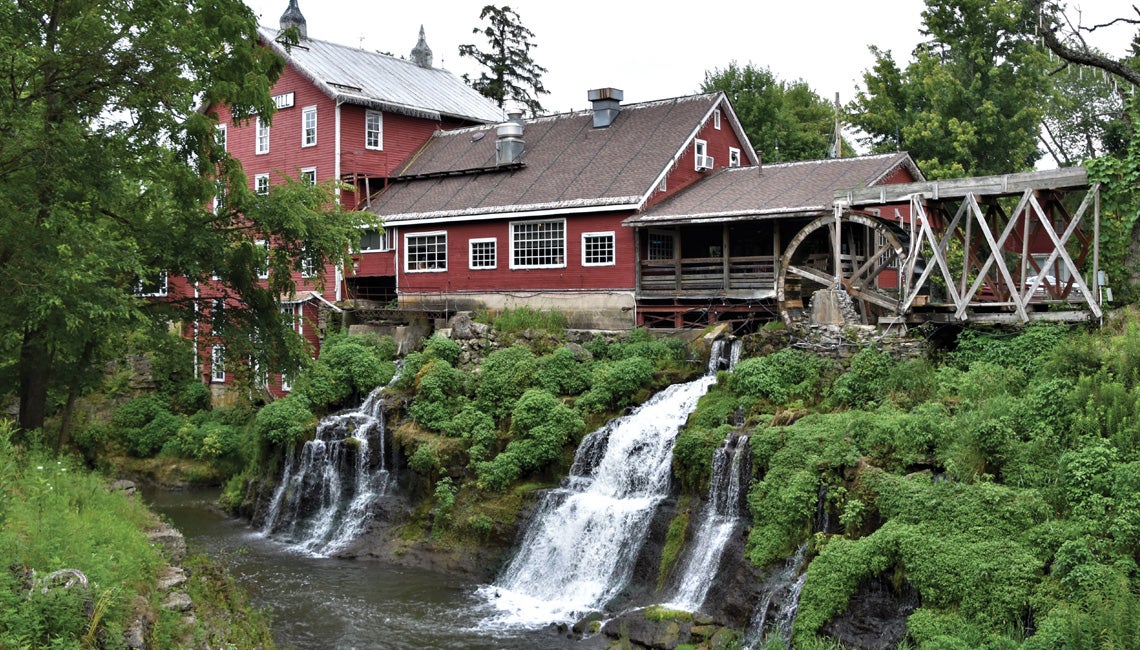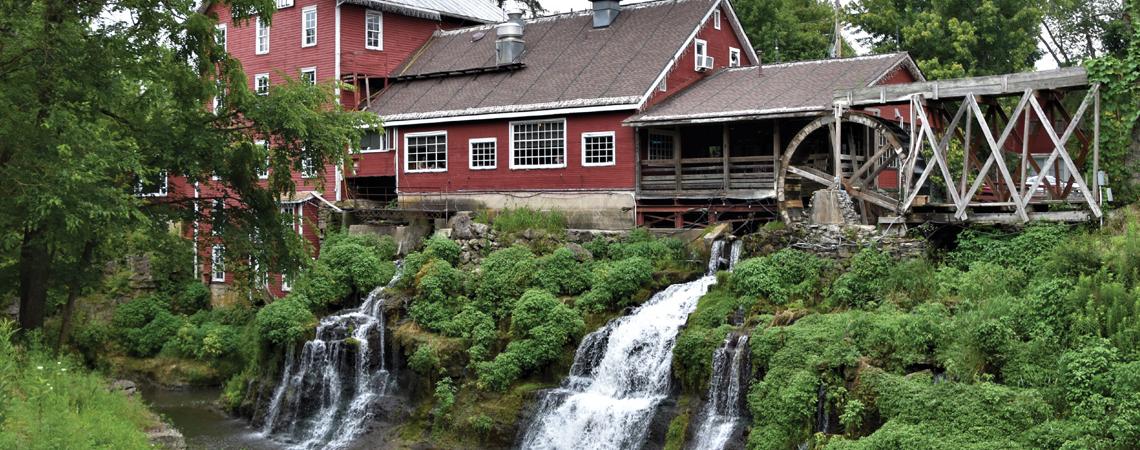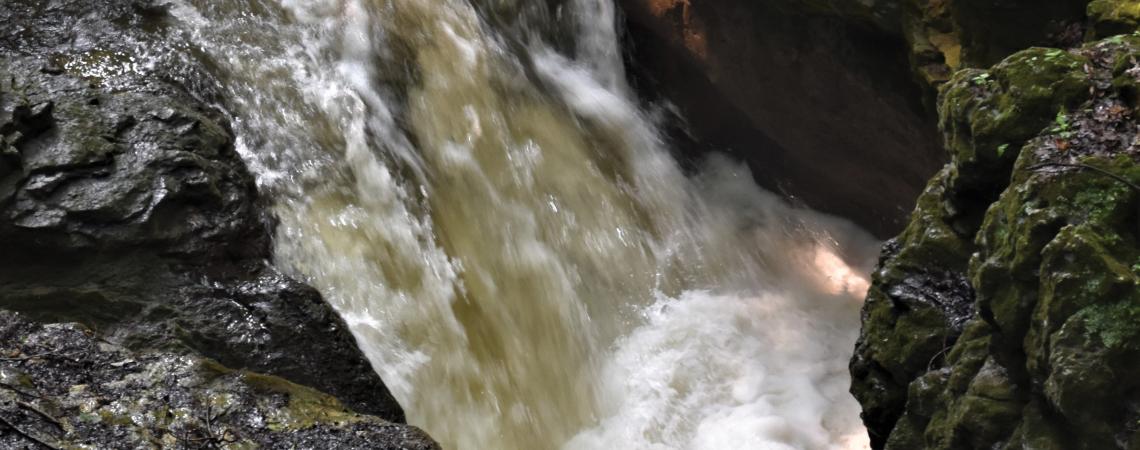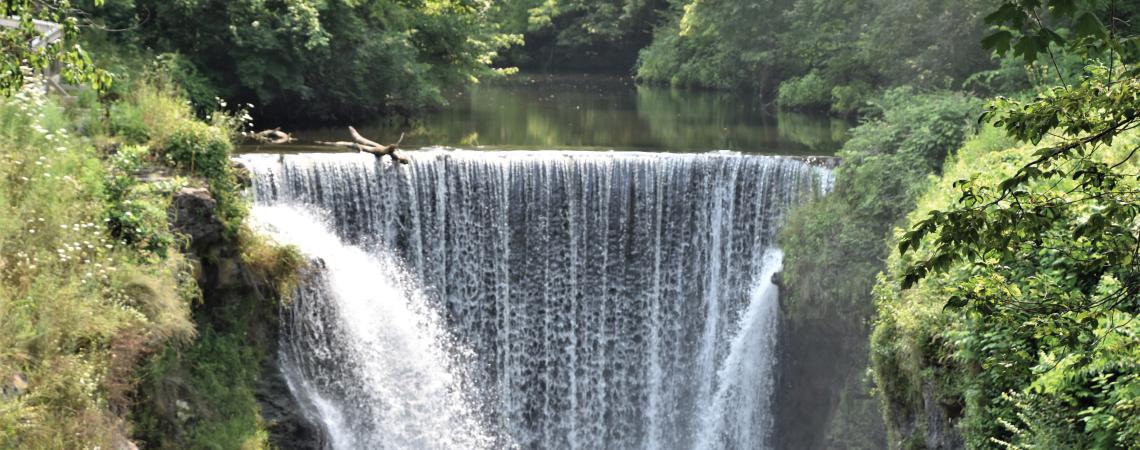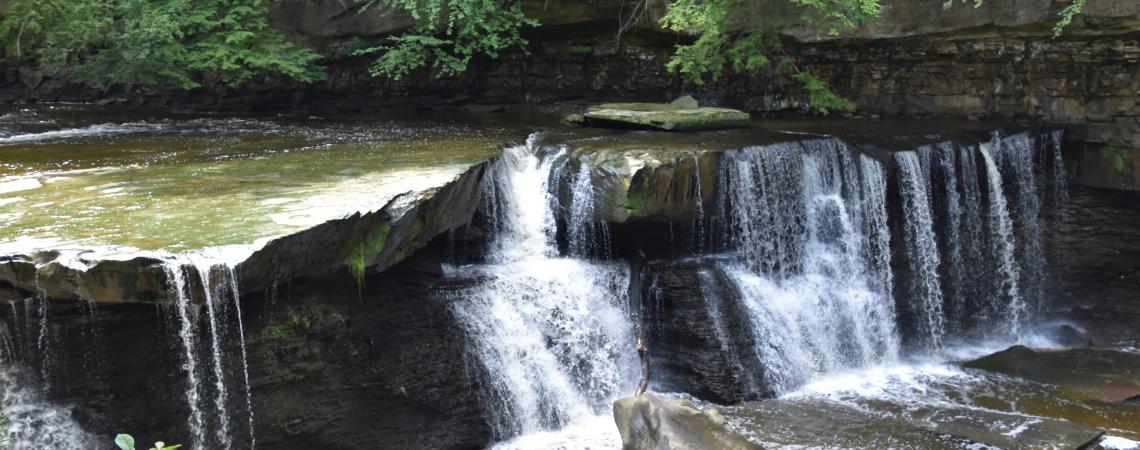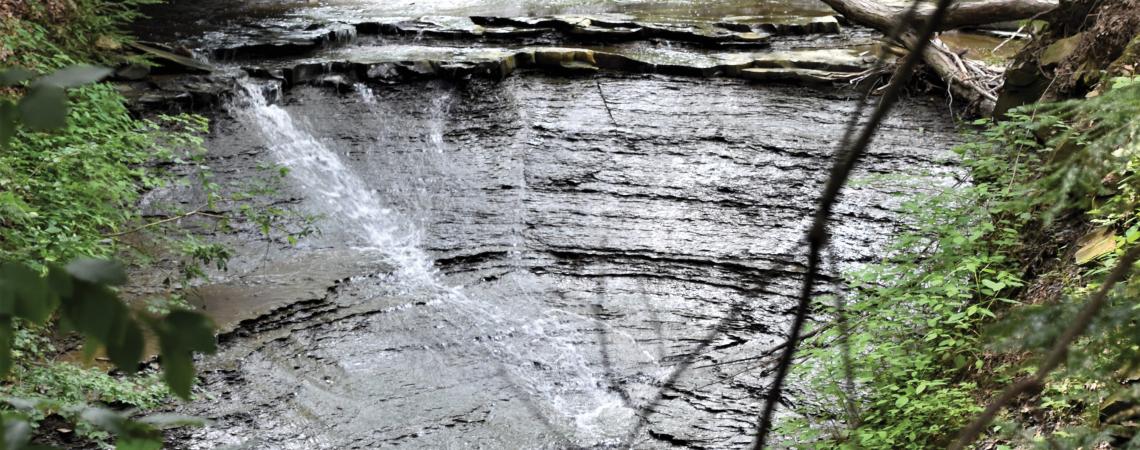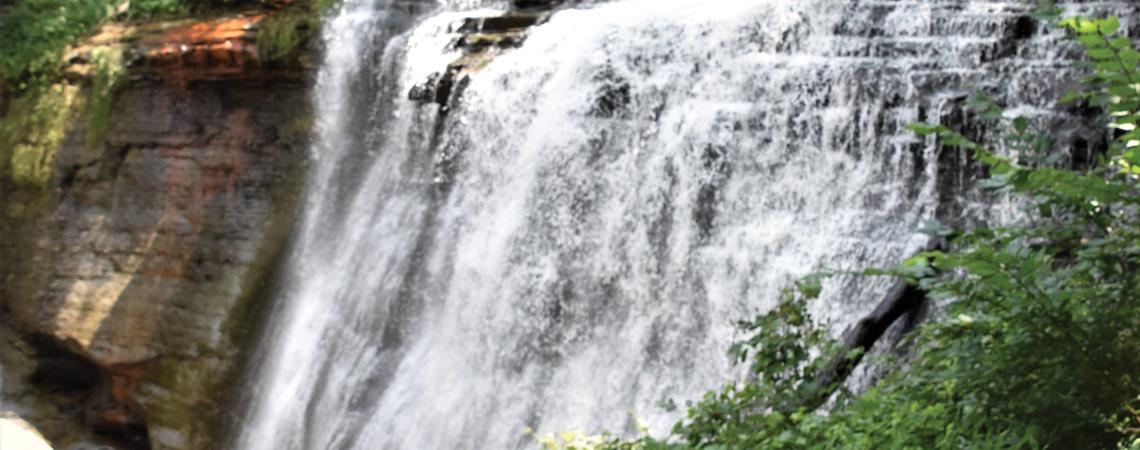There’s nothing quite like a waterfall, where a stream plunges over a precipice with a roar and a sense of seemingly eternal beauty that’s sought after by generation after generation. In Ohio, there are more than 80 waterfalls located in parks, forests, and historic areas — as well as countless others on private lands. We chose seven of the state’s scenic wonders to create a personalized waterfall trail.
Two waterfalls on the Little Miami River have powered Clifton Mill for more than 220 years.
Clifton Mill
75 Water Street, Clifton
Two waterfalls on the Little Miami River have powered Clifton Mill, which sits on the gorge, for more than 220 years. The mill is the largest of the 47 remaining gristmills in the nation. The best view of the mill and falls is from a covered bridge spanning the river. It’s an easy trek and a popular tourist attraction in addition to the restaurant and gift shop housed in the mill (see photo background in the above gallery).
Clifton Gorge
State Nature Preserve
2381 State Route 343, Yellow Springs
The hiking trail along the gorge, lined with wildflowers and accompanied by the roar of water rushing through the canyon, is the longest trek on our trail. Registered as a national natural landmark in 1968, the 268-acre preserve protects one of the most spectacular dolomite and limestone gorges in the state. At a narrow point of the gorge, water rushes over a boulder and splashes into a pool below before roaring on through the canyon.
Indian Run Falls
700 Shawan Falls Drive, Dublin
A surprising number of Ohio’s falls hide in urban areas, and the GPS path to Indian Run Falls leads along busy city streets that could make you think you must be in the wrong place. Just across the street from the Dublin Shamrock Branch Post Office, however, in land that once was roamed by the Wyandot tribe, you’ll find well-maintained trails, boardwalks, and bridges that lead to viewing platforms and two waterfalls: Central Falls and Upper Falls — and you almost forget that you’re in the middle of Ohio’s second-largest metro area.
Cedar Cliff Falls
Indian Mound Reserve, Cedarville
These falls were created to harness the power of Massie Creek for the Harbison Mill — and though the mill closed in 1917, the falls remain an attraction at the 166-acre Indian Mound Reserve. Other than the waterfall, visitors can view an ancient Adena Mound, the old mill site, and the Massie Creek Gorge. Hiking trails lead into the woods, but the waterfalls can be viewed only steps away from the parking lot.
Great Falls of Tinker’s Creek
Bedford Reservation, Willis Road, Bedford
The fun part is setting off on a trail, never knowing the spectacular scene awaiting at the end of the pathway. Bedford Reservation features a deep gorge, a national natural landmark carved out by Tinker’s Creek — the largest tributary of the Cuyahoga River. Once you reach the reservation, Viaduct Park is an easy hike that will reward you with a dramatic view of the falls. Bedford itself sprung out of the falls once the first gristmill came into being in 1821 — later a power plant generated electricity for the area. The falls were mainly a local secret until 2002, when the area was revitalized and opened, a cooperative effort by Cleveland Metroparks and the City of Bedford.
Bridal Veil Falls
Bedford Reservation, Gorge Parkway, Bedford
A short walk along Deerlick Creek, down steps, along a boardwalk, and over a bridge leads to a perfect view of Bridal Veil Falls — slightly less dramatic but just as beautiful as the nearby Great Falls — cascading over low boulders in the creek and finally down the face of a cliff in a thin line. Tall hardwoods and hemlocks shade the pathway, which gives easy access to the popular site.
Brandywine Falls
8176 Brandywine Road, Northfield
In Cuyahoga Valley National Park, travelers walk along Brandywine Gorge Loop, a series of boardwalks, stairways, and viewing platforms, to the 67-foot natural falls. Early settlers used the falls as a power source. In 1814, George Wallace built a sawmill at the top of the falls, and grist and woolen mills followed shortly thereafter. The village of Brandywine grew around the mills and became one of the earliest communities to emerge in the Cuyahoga Valley. The James Wallace house, built by George’s son in 1848, is one of the last village buildings still standing and is today a bed-and-breakfast — the Inn at Brandywine Falls.
